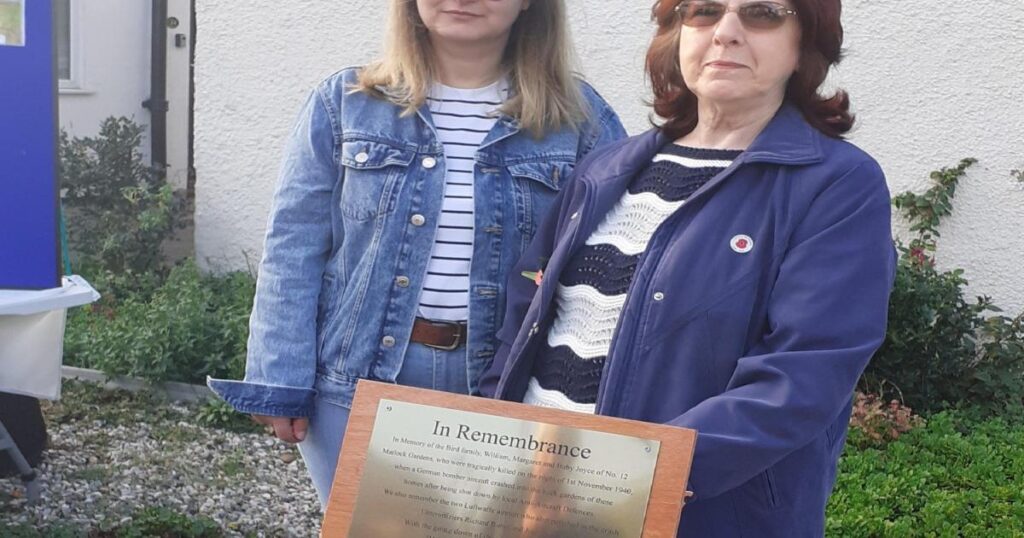It was unveiled on the 85th anniversary of the Heinkel coming down in Matlock Gardens — killing William Bird, his wife Margaret and their two-year-old daughter Joyce.
The plaque was arranged with the two residents from the same house where the Bird family lived at number 12, Lynette Leigh and Agata Cegilska, by Rainham local historian Richard Smith.

“The scene at Matlock Gardens was of terrible devastation,” Richard said. “Many of the families had taken to their Anderson shelters following an air-raid alert.
“Some were injured with burns and shrapnel when aviation fuel from the crash ignited as the fuselage exploded. The whole area was engulfed in flame.”
The emergency services, Fire Brigade, Home Guard and ambulance crews were quickly on the scene helping the survivors.
The Bird family at number 12 were not so lucky. They died in the inferno.

The Heinkel bomber was part of the Luftwaffe’s Staffel Squadron on a night-time air raid that had taken off from occupied France at 7pm on a mission to bomb the Royal Docks at Canning Town.
They crossed east London westward at 19,000 feet at around 9.25pm but didn’t spot the target and released their bombs blindly.
The crew of Heinkel He 111 encountered anti-aircraft fire over Romford on their way back, when an ack-ack defence battery at Whalebone Lane hit its tail section causing a steep dive.

The plane hit Anderson shelters in the back gardens where the families of Matlock Gardens thought they would be safe.
The pilot, Lt Hans Tuffers, gave orders to bail out at 13,000ft. But only he and his observer Josef Haverstreng got clear before the bomber crashed at 9.35pm.
Rescue workers recovered the bodies from the wreckage of the two Germans who did not manage to bail out.
Press photographers from newspapers such as Planet News arrived the next morning to report the tragedy — but no mention of civilian casualties due to wartime defence censorship to protect public morale.

The Bird family were laid to rest at Hornchurch Cemetery on November 8 with just a small headstone saying they had been “killed due to enemy action”.
William Bird was 29, born in Rochford, Essex in 1911.
Margaret Catherine Bird, maiden name Simmons, was 26, born in 1914 at Poplar. Little Joyce was just two, born in Hornchurch in the summer of 1938.
The bodies of the crewmen killed, Richard Bubel and Josef Juvan, were also buried at Hornchurch but later removed in 1962 and reinterred in a German war cemetery in Staffordshire.

The pilot who bailed out landed injured in Belhus Park four miles away.
He surrendered to the lodge keeper the next morning.
An ambulance picked him up from the custody of a local constable, then took him to Oldchurch Hospital in Romford.
His observer crewmate landed unhurt and sought refuge at South Ockendon railway station, where he surrendered to staff at 6am and later handed over to the RAF as a prisoner of war.




